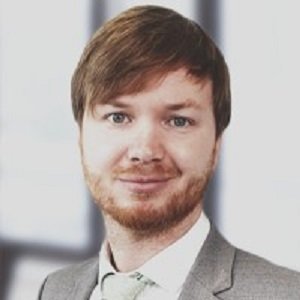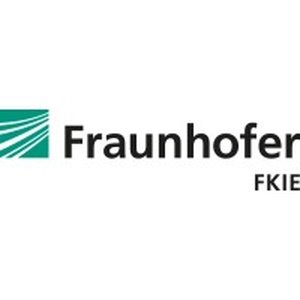Fraunhofer FKIE - Experts & Thought Leaders
Latest Fraunhofer FKIE news & announcements
Securing the future viability and technological innovation of the German Armed Forces, these core tasks are embedded in the military science research carried out at the Wachtberg office in North Rhine-Westphalia. Fraunhofer FKIE has had a number of different guises over the years: it started out as FFM, FAT, and IFE, was then one of three institutes incorporated into FGAN, finally becoming known as Fraunhofer FKIE in 2009. For 60 years, its scientists have been conducting research into the defense and security of Germany and its alliance partners. Viability profile “We have always focused our research on the viability profile of the German Armed Forces. Our goal is to provide the right answers to questions about the future, thus using our technology to afford the German Armed Forces informational, command, and combat superiority,” says FKIE Institute Director, Prof. Peter Martini. He adds, "All the more important is that in the future, our excellent scientific work will be used to equip the German Armed Forces to deal with the challenges posed by future conflict scenarios, as well as providing the appropriate systems to do so." Collaboration opportunities We can use our modern technology to improve the military viability of the German Armed Forces" Ever since being founded as a defense institute 60 years ago, Fraunhofer FKIE has considered itself a trustworthy partner to the authorities, striving to collaborate closely with them and exchange ideas with the soldiers on a personal level. Professor Martini states, “The history of our institute is deeply entrenched in that of the German Armed Forces. Together with our partners from all branches of the military and organizational spheres of the German Armed Forces, we can use our modern technology to improve the military viability of the German Armed Forces, identify threats, provide solutions, and begin bringing these to fruition in our products.” Research work into practice As a result of this intensive collaboration, Fraunhofer FKIE scientists are always looking for opportunities to put their research work into practice. And this does not just apply to national defense. “Our involvement with NATO means that we also play a key part in collaborating with alliance partners. Security is a task that we can only conquer together using interoperable solutions,” says the FKIE Institute Director. Key mission objective This was echoed by General Jörg Vollmer (ret.), Chief Advisor Military Affairs at Fraunhofer FKIE. He said, “Since Russia’s war of aggression against Ukraine broke out, the focus has shifted. NATO and, as a result, Germany, have decided that defending the territory and the alliance is once again key to their mission." Paradigm change The key to success is using military science research that users can rely on right from the start" General Jörg Vollmer (ret.) adds, "Equipping the armed forces of our allies and eliminating the deficits in play in order to successfully act as a deterrent and, if necessary, defend NATO’s territory presents both a paradigm change and a great challenge.” Given resource scarcity and the limited number of personnel, this comes down to using the latest technology to achieve a clear advantage. "The key to success is using military science research that users can rely on right from the start and through to deployment. The time to implement them may be almost here,” says General Jörg Vollmer (ret.). Policy and security framework In light of the ever-changing policy and security framework conditions and the resultant conflict scenarios for the German Armed Forces, it is clear that consistency and trustworthy collaborations within military scientific research are key when it comes to adapting the different research aims to the operational areas of the German Armed Forces. Professor Martini states, “Over the past 60 years, the scientists at FKIE have shown what an important contribution they can and have been able to make to the key technology used by the German Armed Forces. The resulting innovative research must be continued and secured for the future.”
The Ukraine conflict confirms that wars are also fought in urban environments. Russia is mainly aiming its attacks at the neighboring country’s large city centers. Reliable, technology-supported reconnaissance is a key factor in gaining the upper hand here. Sensors are an important resource for this. Classifying gunshots and drones Researchers at the Fraunhofer Institute for Communication, Information Processing, and Ergonomics FKIE are looking into the ways that the systems can provide support with recognizing, classifying, and pinpointing gunshots and drones, as well as important information to get an overview of the situation. At a multinational experiment conducted in Switzerland, the scientists had a week-long opportunity to put their latest research to the test in realistic attack scenarios. Multinational experiment Research teams from the NATO member states of the US, France, Hungary, and the Czech Republic were all in attendance The exercise took place at the invitation of the Swiss Federal Office for Defence Procurement (armasuisse) in Walenstadt in the south of the Canton of St. Gallen as part of the NATO SET-286 research group “Acoustic and Seismic Sensing of Threats in Urban Environments” collaboration. As well as Switzerland, which is not a member of NATO but is part of the “Partnership for Peace (PfP),” and Germany, represented by Fraunhofer FKIE and supported by the German Armed Forces Technical center for Weapons and Ammunition (WTD 91), research teams from the NATO member states of the US, France, Hungary, and the Czech Republic were all in attendance. Using sensors for a better overview “Urban environments pose a great challenge for detection, reconnaissance, and situational awareness,” explains FKIE research group leader, Dr. Marc Oispuu, adding “The NATO SET-286 research group aims to develop and test innovative technologies that detect dangers in this environment. The focus is on acoustic and seismic sensors. This is because signals, like those emitted by gunshots, explosions, or ground and air vehicles, can be recorded using these sensors without seeing them.” The data detected can ultimately be entered into a surveillance system and used to provide key support when making decisions. Conducting exercises with the highest level of security To make this as realistic as possible, a range of different resources were used in the exercise 'Äuli', a model city in the Walenstadt military training area containing realistic reproductions of houses, gas stations, and supermarkets, provides the ideal setting for one of the largest exercises carried out in terms of the degree of organization and security required. The research team’s task was to use the variety of sensor technology located strategically around the model city to detect and classify around 2,000 shots and localize the shooters from a total of eight types of weapons, rifles, and handguns, with and without silencers, indoors, outdoors and from house to house as well as explosions in bunkers and the surrounding area, attacking drones and approaching military vehicles. To make this as realistic as possible, a range of different resources were used in the exercise scenarios. Valuable data set for research “As researchers, we do not get many opportunities like this,” concludes Oispuu, adding “We were able to bring back 3.4 terabytes of data. Such a high-scale, diverse, and well-documented data set is immensely valuable when it comes to continuing our research, so we can use this to make a real start on our work." Measurement campaign Dr. Marc Oispuu continues, "The data were analyzed before being shared and compared with that of other nations. This increased the data set many times over as a result.” In the fall of 2024, Oispuu and his team plan to put the results they compiled to the test once more in a measurement campaign at the Lehnin military training area in Brandenburg.
The European Commission has published the projects selected under the 2022 European Defense Fund (EDF). The SWAT-SHOAL project, funded with 25 million euros, has been selected in the category of Underwater Warfare. SoS development The project aims to develop and implement the concept of a System of Systems (SoS) that integrates different types of manned and unmanned vehicles in a swarm to achieve greater efficiency in underwater missions, such as surveillance, reconnaissance, mine warfare, collaborative engagements, or support for amphibious operations. The focus is put on innovative technologies like swarming, underwater communications, and autonomous operation to augment the versatility and future naval forces’ capabilities in the underwater domain. Command-and-Control Systems The main phases of SWAT-SHOAL are operational concept definition, technology research, and validation The scope will cover the different mission phases (deployment of swarms, initial self-organization, path planning, task accomplishment, and swarm recovery), as well as the integration with Command-and-Control Systems, including the interaction with elements such as sonobuoys, divers, or support vessels. The main phases of SWAT-SHOAL are operational concept definition, technologies research, and validation through simulation & seawater demonstration. SWAT-SHOAL consortium The SWAT-SHOAL consortium is composed of 20 entities, including Large Caps, RTOs, SMEs, and Mid Caps, of 11 nations, all playing a key role: Navantia as the main coordinator. Sener as technical coordinator, Adyta LDA, Akademia Marynarki Wojennej, ATLAS ELEKTRONIK GmbH, Cafa Tech Ou, Develogic GmbH, Fincantieri Nextech Spa, Fraunhofer FKIE, GMV Aerospace and Defense, Kongsberg Defense & Aerospace, Naval Group Belgium, Naval Group France, Prisma Electronics, Saab Kockums, Sea Europe, Lukasiewicz Instytut, Saes, Sotiria Technology and WTD71. Innovative technological solutions Fraunhofer FKIE contributes innovative technological solutions in four main areas of application: Extended range of underwater communication networks; Integration of optical communication for close-proximity scenarios; Authentication within underwater communication networks; Interaction design and Manned-Unmanned-Teaming aspects enabling cooperation between divers and AUV. SWAT-SHOAL results will generate important competitive advantages by defining new defense products and markets, many of them with dual-use potential, as well as positioning the European products in existing markets where they are not currently present.
The New Future For Fire Agencies
DownloadThe Eight Key Trends in Fire Detection in 2023
DownloadA Digital Platform to Improve Fire Safety Compliance and Inspections
DownloadOvercoming the Challenges of Fire Safety in the Paper Industry
DownloadCarbon Monoxide: Creeping Killer Caught In The Act
Download





















